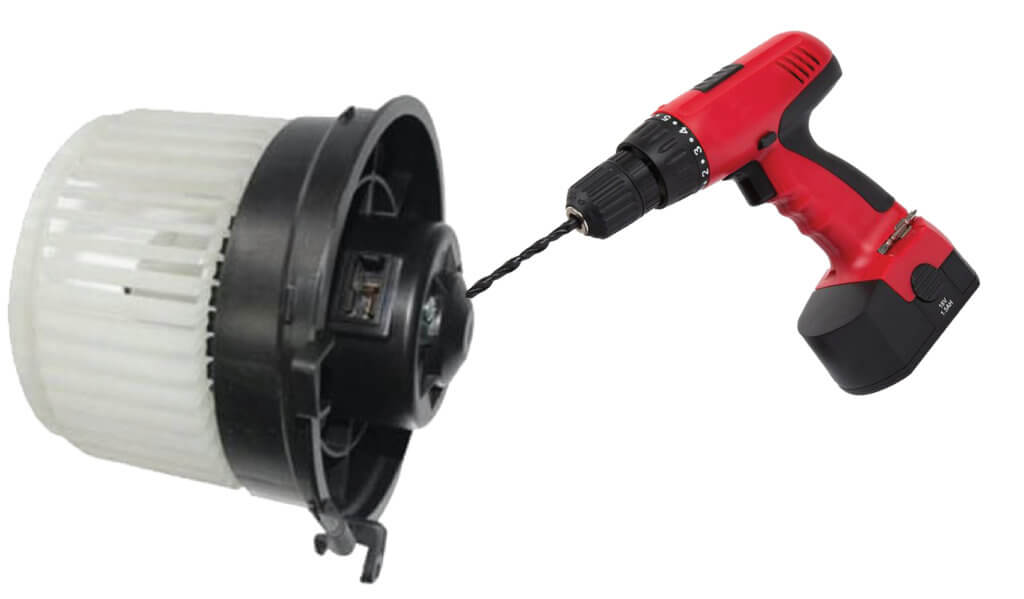Signs of a Bad Blower Motor: What to Look Out For
Learn the most signs of a bad blower motor
The blower motor in your car is responsible for pushing air through the vehicle’s HVAC system. When it starts to fail, you’ll notice some clear symptoms indicating it needs to be repaired or replaced. Here are the most common signs of a bad blower motor:
#1 Squeals when you turn it on
Blower motors are made with inexpensive brass sleeve bearings. As they wear, and before they fail completely, they make a high pitched squealing noise. In some cases, the squeal only appears when you first start the fan. It then quiets down as the bearing heats up. In other cases, the squeal never goes away. If you don’t replace the motor soon, it will stop working altogether.

QUICK FIX for a squealing blower motor: Drill a small hole
Use a small 1/16″ drill bit and drill a hold in the metal bearing housing. Then inject several drops of lightweight oil. 3-in-1 oil works best. WD-40 doesn’t work nearly as well. This is a temporary fix and may get you through a few months of use before you can find the time to replace the entire blower motor.
#2 Fan doesn’t spin unless you smack the dash or area around the motor
This is an indication of a worn brushes, worn armature or a worn bearing. Smacking the dash jars the armature enough to get it off of a dead portion. It will eventually stop working completely. Replace it.
#3 Keeps burning out the resistor or blowing fuse
A worn bearing will cause the blower motor to draw too much current. That will cause the blower motor resistor to fail, and in severe cases, it will cause the blower motor fuse to blow. Replace the blower motor.
Other symptoms of a bad blower motor
No Airflow: The most obvious symptom is when no air comes out of the vents at all, regardless of fan speed setting. This points to the motor not getting power or the internal components being seized up. Without the motor spinning, no air can be pulled through or pushed out of the system.
Weak Airflow: As the brushes wear down or gaps in the airflow path develop, you may experience diminished airflow. Air will still come out of the vents but with significantly less force compared to normal operation. The airflow may be weak even at the highest fan setting due to the motor not spinning fast enough.
Intermittent Operation: Faulty electrical connections can cause a blower motor to work intermittently. For example, the fan may only work on certain speed settings. Or it may blow consistently for a while and then stop unexpectedly. This indicates an external wiring or switch issue versus an internal motor problem.
Electrical Burning Smell: If the motor is drawing too much current due to damaged windings or electrical shorts, you may notice a burning smell when the blower is turned on. This indicates overheating which could lead to motor failure or even fire. Get the system inspected right away if you detect this odor.
©, 2021 Rick Muscoplat
Posted on by Rick Muscoplat